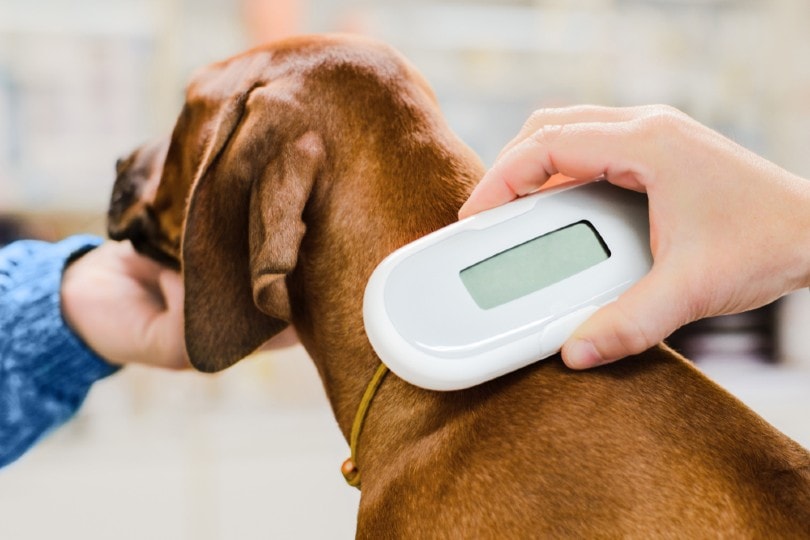
Exploring Europe’s rich history, unique landscape, and all-around wonder is always more enjoyable when you have quality company on your journey. It’s a perfect opportunity for adventurous dog owners to share life-long memories with their best friends.
Europe offers countless dog-friendly locales and activities to make every trip unique and fulfilling, but proper preparation takes much more than packing a travel bag. Ensure the safest, most satisfying journey possible by considering these six points when traveling with your dog to Europe.
The 6 Things to Consider When Traveling With a Dog to Europe
1. Check Your Destination Country’s Health Requirements

| When to Complete: | As soon as possible |
| Estimated Cost: | Free |
Check your destination country’s health certification requirements as soon as you decide to travel with your dog to Europe. While EU countries generally use the same rules, some nations, like Iceland and the U.K., have unique travel stipulations.
Research whether the country you plan to visit restricts specific breeds and which vaccination, worming treatment, health exams, and documentation you need to comply with their rules.
2. Research Safe Flight Options
| When to Complete: | As soon as possible |
| Estimated Cost: | Free |
Ideally, your dog will fly with you in the airplane cabin. Though cargo holds are generally safe, a long flight to Europe can be stressful and potentially hazardous for your pet.
Research airlines that accept pets in the cabin since not all of them do. Check for rules around weight limits, allowable carrier types, and health requirements to find one that will let you keep your pet by your side on your outbound and return flight (if there is one!).
3. Update Your Dog’s Microchip

| When to Complete: | At least 1 month before traveling |
| Estimated Cost: | $50 plus annual database fee |
European countries require incoming pets to be identified with a microchip or transponder, which they verify by scanning and matching your dog’s microchip number to your paperwork. A non-compliant nine or 10-digit chip may not be scannable. The 15-digit microchip meets ISO standards 11784/11785, making it readable anywhere.
Getting an ISO-compliant chip is a critical first step to accomplish at least a month ahead of time. Make sure you match the date of the implantation of the microchip with your dog’s rabies vaccine (see point number 3). If you’re unsure whether your dog has a valid chip, your vet can do a quick scan and provide all the information.
If your dog has a non-ISO chip, speak to your vet about the best options. It’s generally okay to give your dog a new microchip when they have a non-compliant one, as anyone scanning them can differentiate between the chips to get the necessary information. However, your vet will help you with this decision.
Update your contact information in the microchip’s database. While you must have a valid chip to enter Europe with a dog, it’s also a crucial backup during your stay in case your dog wanders off. Keeping up-to-date information on a scannable microchip is the surest way to significantly increase your chances of reuniting with a lost pet.
4. Get Your Dog a Rabies Vaccine
| When to Complete: | After microchipping; At least 21 days before traveling |
| Estimated Cost: | $20–$75 |
After resolving your pet’s microchip, they’ll need a rabies vaccine at least 21 days before traveling. Three weeks is the time it takes for your dog’s antibodies to develop, ensuring they are protected against the disease during their trip.
Ask your vet about the longevity of the various vaccination options. To save time, your dog can get a rabies vaccination well before the trip as long as it won’t expire while you are in Europe. Primary vaccines are usually valid for 1 year, while follow-up boosters might be good for up to 3 years, but this depends on the type of vaccine and the country’s requirements.
The critical point to consider is that you should only do this if your dog already has an up-to-date microchip. If the rabies certificate doesn’t indicate the microchip number matching it to your dog, it won’t matter whether they’re vaccinated.
5. Acquire a “Non-Commercial” Health Certificate

| When to Complete: | Within 10 days of arriving in Europe |
| Estimated Cost: | $150–$250 |
When your dog has the necessary treatments, you can acquire the “commercial” or “non-commercial” EU animal health certificate. An EU animal health certificate is a type of document that contains specific information about your pet (identity, health, rabies vaccinations) and is based on an EU standard model. The non-commercial health certificate will be the one to choose if you travel alongside fewer than five dogs.
You need an accredited veterinarian to issue the certificate within 10 days of the arrival date. If your vet doesn’t have USDA certification, they can at least refer you to a local vet who does. After completing the health certificate, you’ll send it to your state’s USDA Endorsement Office.
You only have 10 days to get the endorsement. Play it safe by submitting your certificate as early as possible in that window and choosing overnight shipping on return paperwork to receive it faster. Once you have the health certificate, it’s valid for travel between EU countries for 4 months as long as the rabies vaccine does not expire.
6. Give Your Dog a Tapeworm Treatment If Needed
| When to Complete: | 1–5 days before landing in certain countries |
| Estimated Cost: | $15–$50 |
Depending on where you travel in Europe, your dog may need tapeworm treatment 24–120 hours before arrival. All details of the treatment must be entered in your pet’s passport or EU health certificate. The following countries require tapeworm treatment for incoming dogs:
A vet must administer the treatment containing Praziquantel to work against Echinococcus multilocularis. You’ll need a record of the treatment on your health certification or pet passport. Unless your dog is in Europe for more than 4 months or falls ill, this may be the only vet trip you’ll need to make during your travels.
Conclusion
Adventuring in Europe is an exciting opportunity many pets don’t get to enjoy. Dog-friendly tourist sites, hotels, and eateries abound, offering no shortage of unique stories to bring home with every trip. Research and plan your itinerary to confirm dogs are welcome everywhere you want to visit, and consider these six essential points to ensure the smoothest experience while traveling with your dog to Europe.
Last but not least, don’t forget to check the requirements to return to your home country once your trip to Europe has finished. Work with your vet to get this information right, as most countries have easily accessible online information about the requirements for dogs returning back home.
Featured Image Credit: Frau aus UA, Shutterstock








